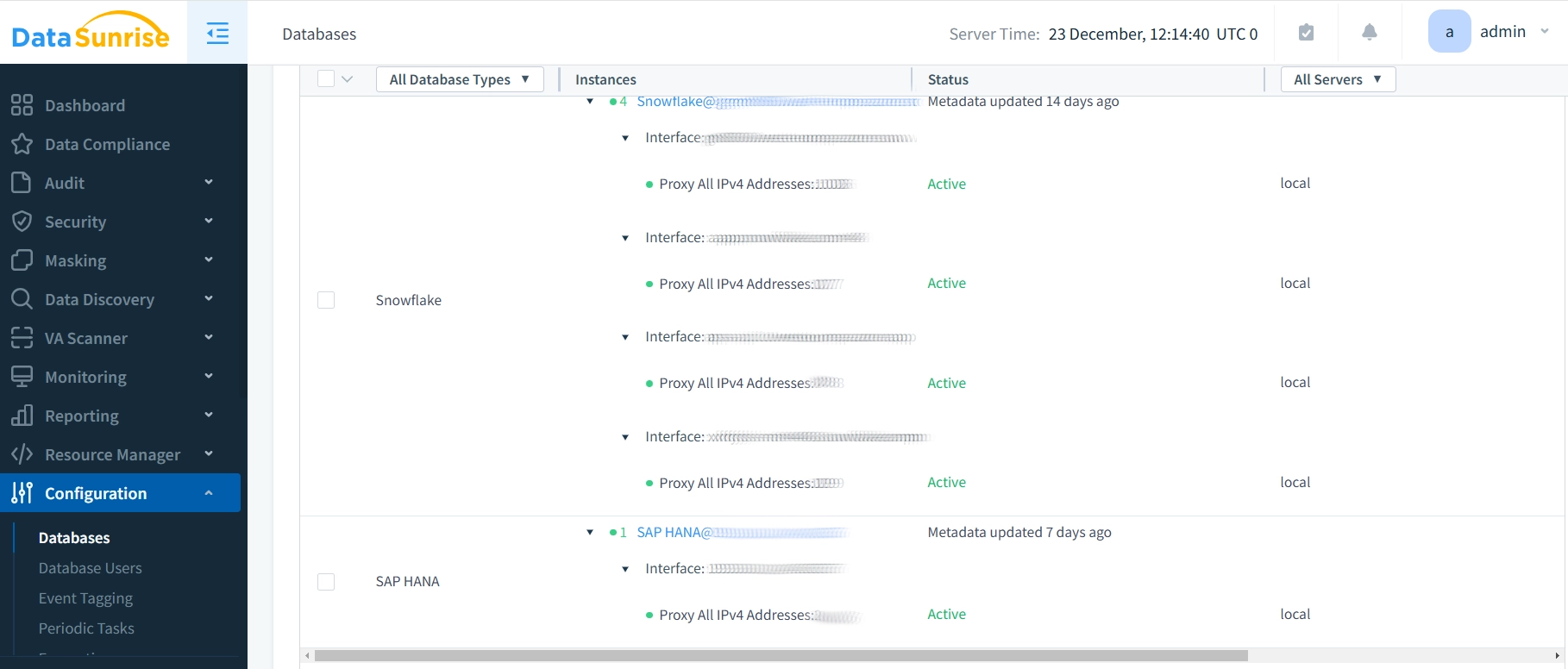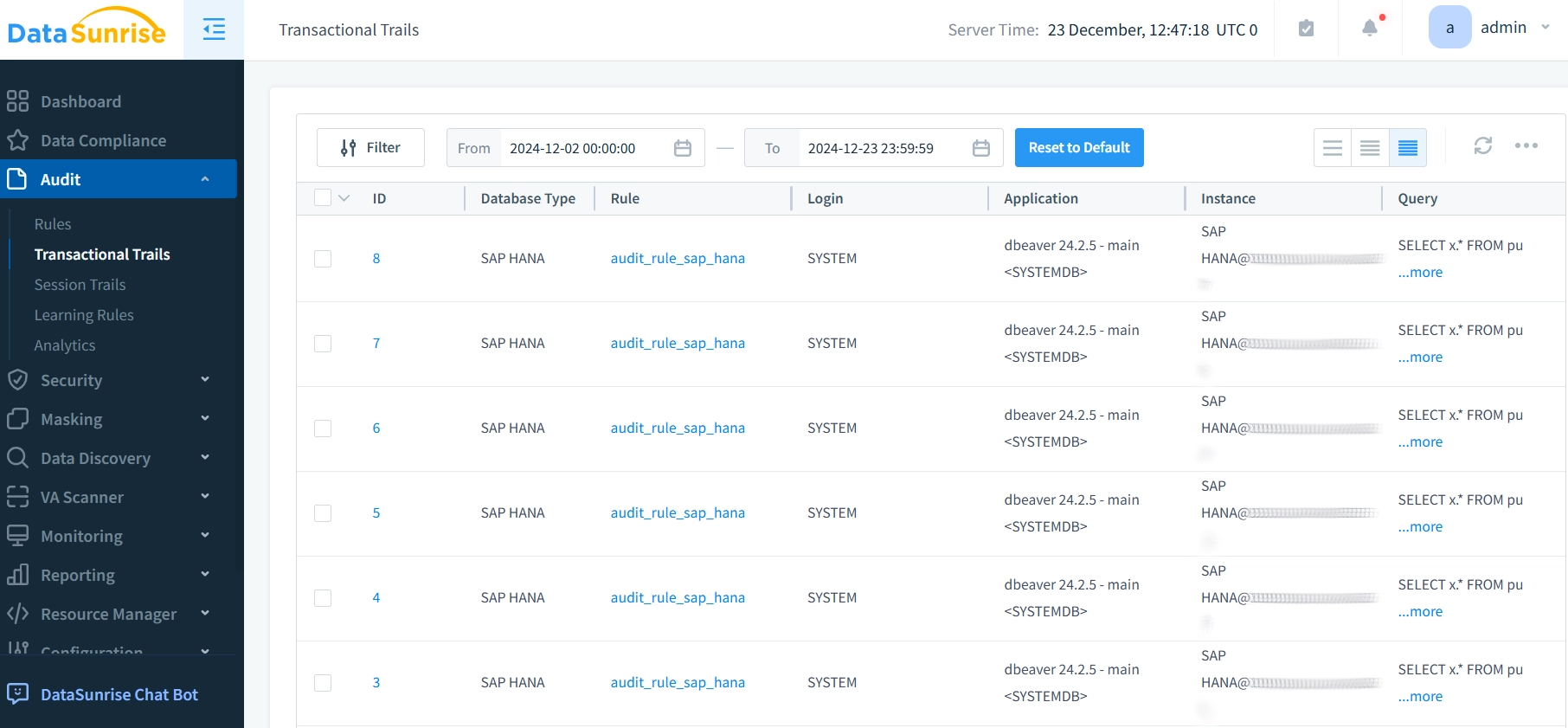
SAP HANA Data Audit Trail

The SAP HANA data audit trail serves as a fundamental component of database security and compliance. According to the FTC’s 2023 Consumer Sentinel Network Data Book, organizations lost $3.4 billion due to email scams. This shows how important it is to monitor databases and keep audit trails. For organizations using SAP HANA, it is important not to enable audit logging in the default settings. This requires careful setup to ensure proper security.
Modern data management requires careful attention to audit trails, particularly given current regulatory requirements and security considerations. Organizations handling sensitive customer information, financial data, or business intelligence need properly configured audit capabilities to maintain data integrity and compliance. This guide explores the essential components of implementing and managing SAP HANA audit trails effectively.
What is an SAP HANA Data Audit Trail?
An SAP HANA data audit trail keeps a record of all actions on data in the database. This includes data access, changes, and deletions. The audit trail captures details about each operation, including the user, timestamp, and the specific data involved. By maintaining a detailed log of these events, businesses can track user activities, ensure compliance, and safeguard sensitive data.
You can set up the audit trail in SAP HANA to track different database events. This includes read and write operations, data changes, configuration updates, and more. This level of tracking provides both operational transparency and security, allowing administrators to quickly detect and respond to unauthorized activities.
Understanding SAP HANA Native Audit Capabilities
SAP HANA’s auditing service provides visibility into actions performed within your database. The system allows independent audit configuration for each tenant database, ensuring isolated and secure monitoring environments. You can set up auditing with the SAP HANA cockpit or SQL statements. However, remember that audit trails are only set in the system database.
Key audit components include:
- Audit policies defining monitored actions
- Multiple audit trail targets
- Configurable audit levels
- Tenant-specific audit settings
Configuring Audit Trails
SAP HANA supports three primary audit trail targets for production systems:
- Internal Database Table
- Enables quick querying and analysis
- Provides tamper-proof storage
- Accessible only through public system views
- Linux Syslog
- Default log daemon in UNIX systems
- Secure storage location
- Inaccessible even to database administrators
- CSV Text File (recommended for test environments only)
-- Example of viewing audit logs from internal database table SELECT * FROM "PUBLIC"."AUDIT_LOG" WHERE AUDIT_LEVEL = 'CRITICAL' ORDER BY TIMESTAMP DESC;
Setting Up Audit Policies
Audit policies are the cornerstone of SAP HANA’s audit trail system. Here’s how to create an effective policy:
-- Create an audit policy for user and role management CREATE AUDIT POLICY policy_UserRoleManagement AUDITING ALL CREATE USER, DROP USER, CREATE ROLE, DROP ROLE LEVEL CRITICAL; -- Enable the audit policy ALTER AUDIT POLICY policy_UserRoleManagement ENABLE;
Each policy can specify:
- Audited actions (successful, unsuccessful, or both)
- Target objects (schemas, tables, views)
- Affected users (all or specific)
- Audit levels (EMERGENCY, ALERT, CRITICAL, WARNING, INFO)
Mandatory Audit Actions
Some actions are always audited when auditing is active, regardless of user-defined policies:
- Creation, modification, or deletion of audit policies
- Deletion of audit entries
- Changes to audit configuration
- Modifications to audit trail targets
Managing Audit Trail Size
To prevent unlimited growth of audit tables, SAP HANA provides several management features:
-- Clear all audit logs (requires AUDIT OPERATOR privilege) ALTER SYSTEM CLEAR AUDIT LOG ALL;
The system monitors table size relative to memory allocation:
- Alerts at 5%, 7%, 9%, and 11% of allocation limit
- Minimum retention period of seven days
- Configurable retention periods for database table targets
Enhancing SAP HANA Data Auditing with DataSunrise
SAP HANA has built-in auditing features. However, DataSunrise offers a set of advanced tools. These tools enhance the auditing and security functions of SAP HANA. DataSunrise enhances data protection with features like real-time data masking and centralized management of audit policies.
Centralized Auditing and Data Masking
DataSunrise enables organizations to centrally manage all their audit policies across multiple SAP HANA instances. This makes it easier to monitor and ensure compliance with internal and external regulations. DataSunrise offers more than just auditing. It also provides dynamic data masking. This feature hides sensitive data in real-time. It helps stop unauthorized access. For example, it can mask customer information such as email addresses or phone numbers for non-privileged users.
DataSunrise Integration for Data Auditing
To implement DataSunrise’s audit capabilities for SAP HANA, follow these configuration steps:
- Create a DataSunrise SAP HANA instance
- Set up audit rules through DataSunrise interface
- Track database events in the “Transactional Trails” tab



Key Benefits of Using DataSunrise:
- Comprehensive Security: DataSunrise combines auditing with dynamic data masking and encryption to provide end-to-end data protection.
- Centralized Control: Manage audit policies across multiple SAP HANA databases from a single interface, ensuring uniform compliance and security.
- Real-Time Monitoring: DataSunrise continuously monitors database activities and provides real-time alerts for suspicious events.
- Easy Integration: DataSunrise integrates seamlessly with SAP HANA and other database platforms, making it easy to implement without disrupting operations.
- Regulatory Compliance: DataSunrise assists organizations in meeting industry regulations by automating audit trails and masking sensitive data. This functionality ensures compliance with standards such as GDPR, HIPAA, and PCI-DSS.
Best Practices for SAP HANA Audit Trail
- Policy Management: Establishing effective audit trails in SAP HANA requires a comprehensive approach to policy creation and maintenance. Organizations should establish clear guidelines for creating and maintaining audit policies. This includes separating incompatible audit actions into distinct policies and implementing appropriate audit levels based on action sensitivity. Regular policy reviews ensure continued alignment with security requirements and compliance standards.
- Storage Management: Managing audit trail storage requires careful attention to detail and proactive monitoring. Organizations must implement robust monitoring of audit trail size and growth patterns. Setting appropriate retention periods prevents unnecessary storage consumption while meeting compliance requirements. Alert configuration for storage thresholds enables proactive management before issues arise.
- Security Implementation: Security forms the backbone of effective audit trail management. Production environments should utilize either internal database tables or Linux syslog for maximum security. Access to audit operations should be strictly controlled through careful management of audit operator privileges. Regular backup procedures for audit trails ensure data preservation and compliance with retention requirements.
- Third-Party Integration: Solutions like DataSunrise can significantly enhance audit trail capabilities beyond native features. These tools provide centralized management interfaces, advanced monitoring features, and integration with existing security infrastructure. We also offer additional layers of protection through features like dynamic data masking and real-time activity monitoring.
Conclusion
In today’s data-focused world, having a strong data audit trail for SAP HANA is more than just a rule. It is a key part of a smart strategy. SAP HANA has good auditing features, like policy management, audit trails, and security controls. However, organizations often need more protection and oversight. This is where DataSunrise’s Database Security Suite emerges as a powerful complement to native functionality.
DataSunrise extends SAP HANA’s audit capabilities through advanced features like real-time monitoring, sophisticated data masking, and centralized audit management. The platform’s easy-to-use interface makes it simple to manage audit trails in different databases. Its dynamic masking features keep sensitive data safe without disrupting business operations.
For organizations seeking to strengthen their data security posture, DataSunrise offers a comprehensive solution that seamlessly integrates with SAP HANA. Our security suite provides granular control over audit trails, sophisticated masking rules, and unified security policies—all managed through a single, cohesive platform. To experience these capabilities firsthand, visit DataSunrise’s website and schedule an online demo of our cutting-edge database security solutions.
